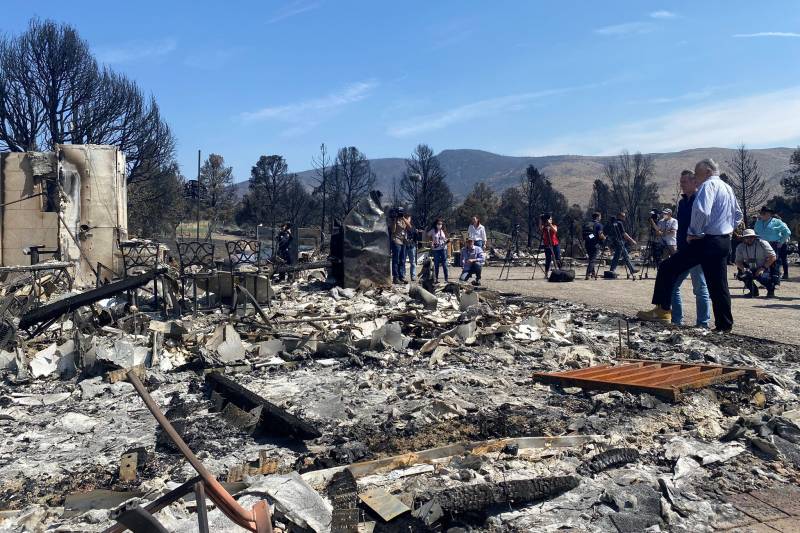The 106-square-mile blaze was approximately 59% contained as of Wednesday. At least 23 buildings have burned since lightning sparked the fire on July 4. Evacuation orders for about 2,000 residents on both sides of the state line were lifted earlier in the week.
Newsom touted the partnerships between Western states as key in preparing for what could be a record-breaking fire season. "California and Nevada have long-standing partnerships that are well established," he said. "It's all about mutual aid."
However, both Newsom and Sisolak stressed that greater federal support is needed. "It's not an indictment, it's not finger-pointing, it's not novel, it's not new to the Biden administration or even the previous administration," Newsom said, adding that the federal approach toward wildfires needs to be reworked to meet the demands of a hotter climate.
"We don't have enough resources," said Sisolak. "It's a simple mathematical equation. We've got these many hundreds of thousands acres of land to protect, we need more bodies and we need more air support to be effective at this."
Several fires raging through the West at this moment, including the massive Dixie Fire, which has already burned through more than 217,000 acres (339 square miles), have consumed large tracts of federal land in California. More than 10,000 homies in the region about 175 miles northeast of San Francisco are still threatened by its flames.
Tuesday saw thunderstorms that brought some rain and cooler and more humid weather that made grass and brushy areas less prone to burning, fire officials said. The chance of thunderstorms with some rain, possibly heavy at times, was expected to continue through Friday.
“This wet stuff fell out of the sky yesterday that I barely remembered and recognized,” Dan Dallas, an incident commander for the fire, said Tuesday evening at a briefing.
It fell gently overnight over the whole fire, and coupled with firefighter efforts, moderated the ferocity of the blaze.
“We’re not doing hand-to-hand combat” on the blaze, he said.
It was a welcome relief from the fiercely dry, hot weather that had scorched much of the West only a week or two earlier, when flames feeding on bone-dry fuel raged through a dozen states.
A historic drought and recent heat waves tied to climate change have made wildfires harder to fight in the American West. Scientists say climate change has made the region much warmer and drier in the past 30 years and will continue to make weather more extreme and wildfires more frequent and destructive.
In neighboring Oregon, rain also fell Tuesday morning over the three-week-old Bootleg Fire, which has destroyed 161 homes, 247 outbuildings and 342 vehicles in Klamath and Lake counties.
Crews hoped to get a break from cooler temperatures and a chance of isolated thunderstorms through Wednesday before hotter, drier weather returned, officials said.
Crews had the lightning-caused fire more than halfway contained after it scorched nearly 646 square miles of remote land.
On July 18, a day of especially extreme fire activity, the blaze spawned a fire tornado in the Fremont-Winema National Forest, scientists said. The phenomenon occurred when smoke rose nearly 6 miles into the sky and formed giant clouds, Bruno Rodriguez, a meteorologist assigned to the Bootleg Fire, told the Herald and News of Klamath Falls, Oregon.
